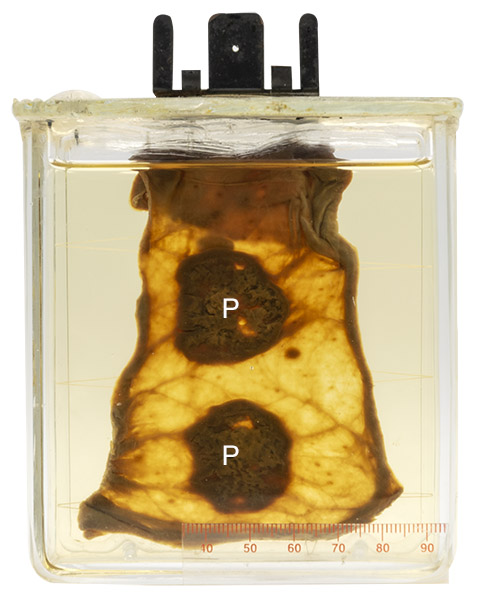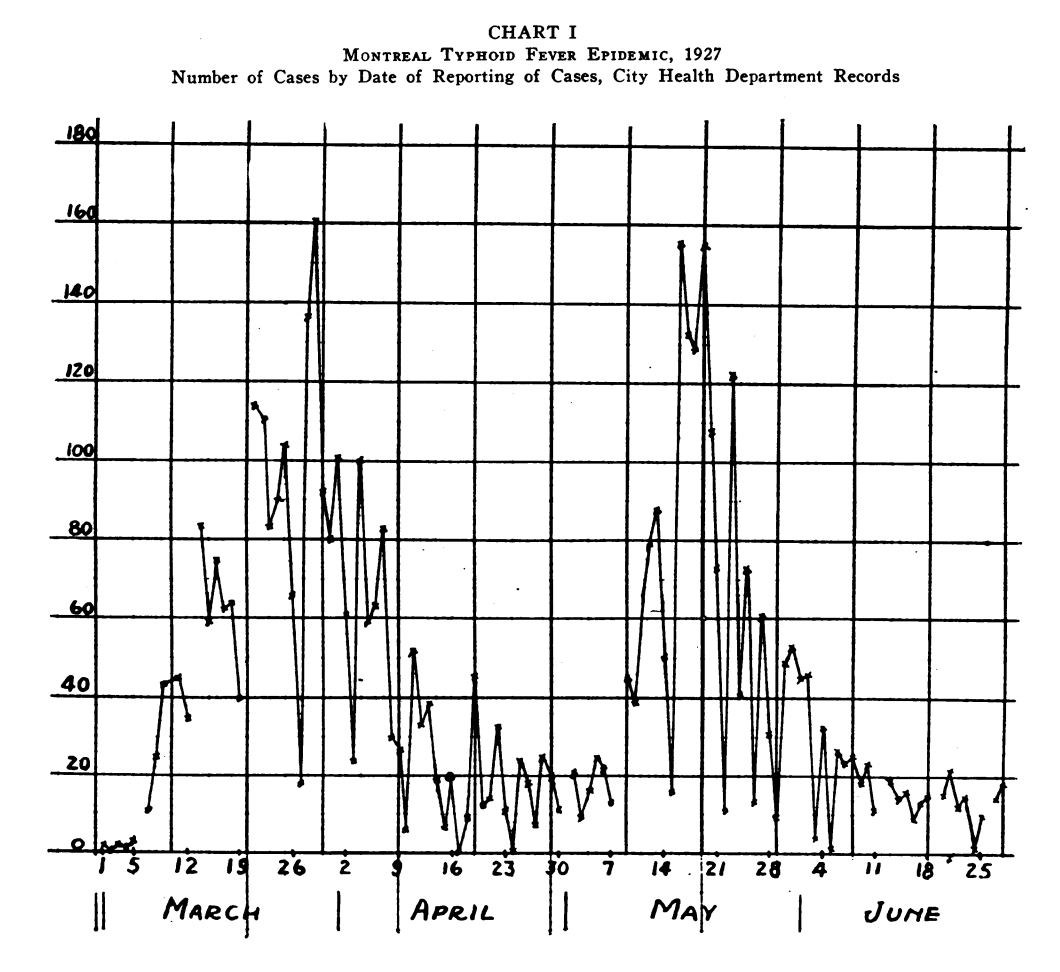

Age/sex: unknown
Size: 1.1 x 9.2 x 4.0 cm
The specimen consists of a segment of small intestine with two prominent mucosal “nodules” (P) representing enlarged Peyer patches.
Typhoid fever
Typhoid fever is an intestinal infection caused by the bacterium Salmonella enterica. It is usually acquired by drinking water contaminated by fecal material from people who have the disease or by eating food prepared by an asymptomatic carrier of the bacterium. Although the small intestine is the initial site of disease, involvement of other organs can be seen, leading to a variety of clinical findings. As the name suggests, fever is usually prominent.
In the intestine, the bacterium causes enlargement of normal foci of lymphoid tissue (Peyer patches) and, in more serious disease, mucosal ulceration or bowel wall perforation. The last is the most concerning, since it can result in peritonitis, shock and death.
A vaccine was developed in 1896 and was used successfully to prevent the disease in British and American soldiers in WWI. Antibiotic therapy and improved water sanitation have decreased the frequency and seriousness of the disease in the latter part of the 20th century. However, it is still responsible for millions of cases in parts of the developing world.
An outbreak of the disease in Montreal in 1927 resulted in about 4750 cases and 450 deaths over a four-month period. It was traced to contaminated milk from the Montreal Dairy Company and led to the adoption of the city’s first public health code.
Below: A chart from a 1927 article documenting daily case numbers during Montreal’s typhoid fever outbreak.
Source: Chart 1. Daily cases of typhoid fever during the Montreal outbreak. From “The Montreal Typhoid Fever Situation,” by LL Lumsden, JP Leage, HR Crohurst, and CE Waller. (1927). Am J Public Health (NY). 17(8), 783-790.
